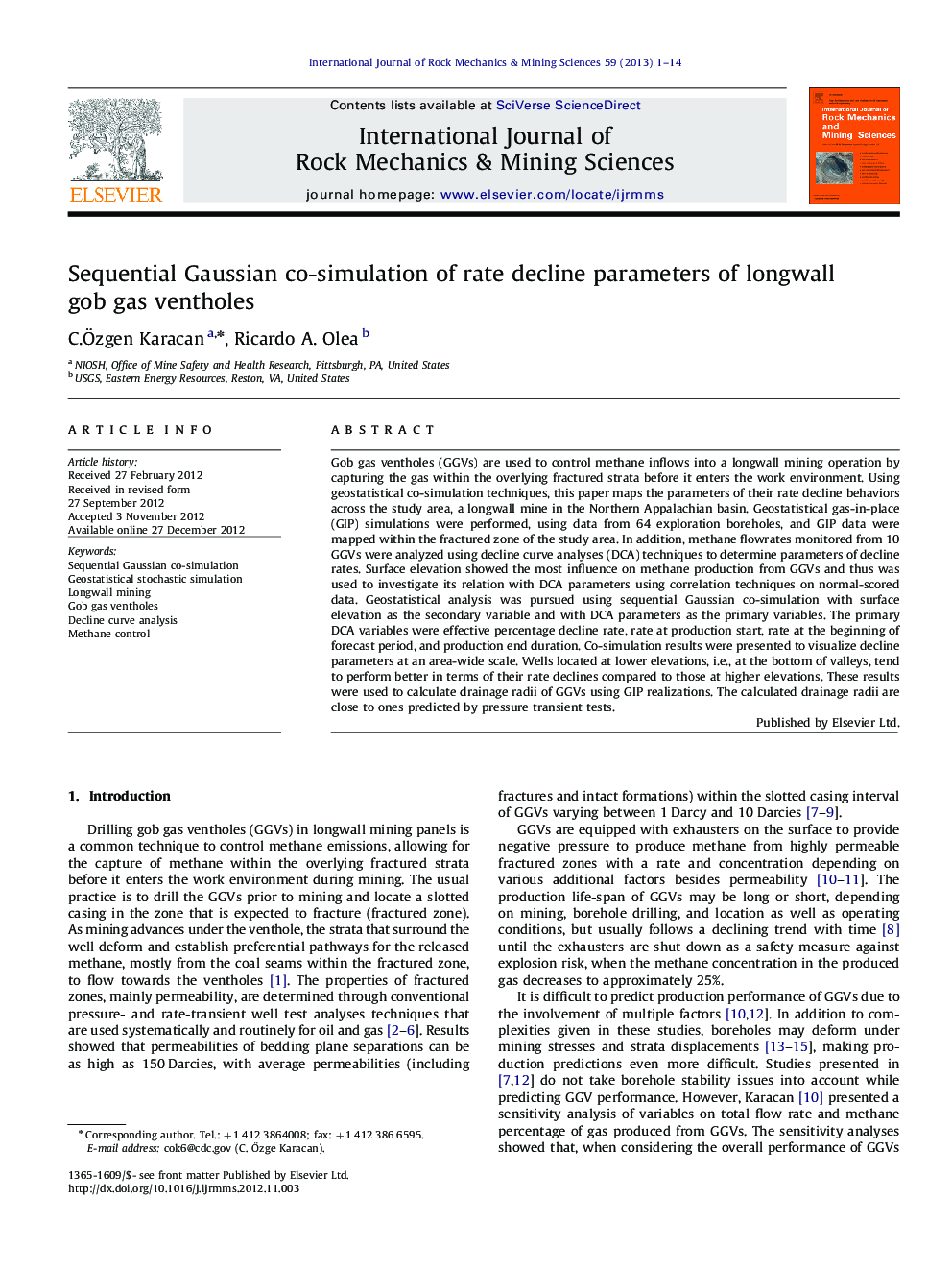| Article ID | Journal | Published Year | Pages | File Type |
|---|---|---|---|---|
| 809613 | International Journal of Rock Mechanics and Mining Sciences | 2013 | 14 Pages |
Gob gas ventholes (GGVs) are used to control methane inflows into a longwall mining operation by capturing the gas within the overlying fractured strata before it enters the work environment. Using geostatistical co-simulation techniques, this paper maps the parameters of their rate decline behaviors across the study area, a longwall mine in the Northern Appalachian basin. Geostatistical gas-in-place (GIP) simulations were performed, using data from 64 exploration boreholes, and GIP data were mapped within the fractured zone of the study area. In addition, methane flowrates monitored from 10 GGVs were analyzed using decline curve analyses (DCA) techniques to determine parameters of decline rates. Surface elevation showed the most influence on methane production from GGVs and thus was used to investigate its relation with DCA parameters using correlation techniques on normal-scored data. Geostatistical analysis was pursued using sequential Gaussian co-simulation with surface elevation as the secondary variable and with DCA parameters as the primary variables. The primary DCA variables were effective percentage decline rate, rate at production start, rate at the beginning of forecast period, and production end duration. Co-simulation results were presented to visualize decline parameters at an area-wide scale. Wells located at lower elevations, i.e., at the bottom of valleys, tend to perform better in terms of their rate declines compared to those at higher elevations. These results were used to calculate drainage radii of GGVs using GIP realizations. The calculated drainage radii are close to ones predicted by pressure transient tests.
► Geostatistical co-simulation results for gob gas ventholes (GGVs) were presented for decline parameters. ► GGVs located at lower elevations, i.e., at the bottom of valleys, tend to perform better in terms of their rate declines. ► Geostatistical simulation results were used to calculate drainage radii of GGVs using gas-in-place realizations. ► Calculated drainage radii were close to ones predicted by pressure transient tests.
